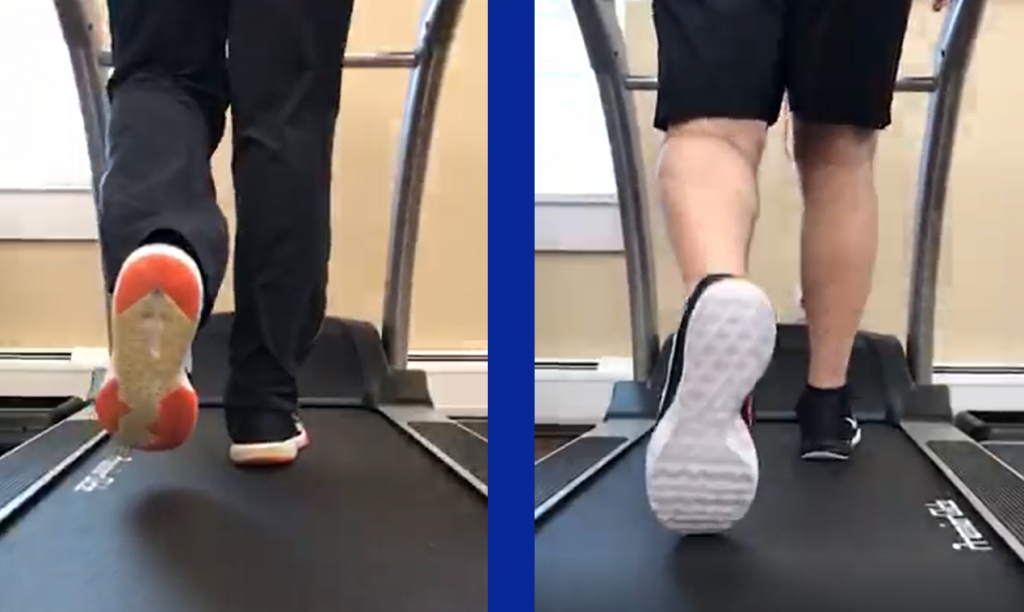Runner’s Knee (Patellofemoral Pain Syndrome or Iliotibial Band Syndrome) is localized knee pain. It’s categorized as an overuse injury that tends to affect runners, cyclists, hikers, and fitness enthusiasts. Without treatment, knee pain can become debilitating, often stopping you from performing activities you love.
Runner’s knee pain (or patellofemoral pain syndrome/ chondromalacia patella) affects the knee cap (patella). Pain starts at and around the same area where your knee joint connects to the thighbone (femur). Despite the name, this condition is not limited to runners. Other athletes, especially those who repeatedly move their legs in repetitive motion (like cycling) can experience anterior knee pain. Structural defects, trauma, hip weakness, and tight hamstrings are other causes of runner’s knee.
The overuse injury usually begins with a dull ache around/behind the knee cap. When the condition worsens, you can experience signs of stiffness, tenderness, and reduced range of motion, especially in the knee and hip. Due to this, your physical movements become restricted and painful.
Early intervention with runner’s knee exercises and manual therapy can prevent knee pain from escalating and becoming a lifelong problem. Ideally, personalized treatment plans can help patients recover within 6-12 weeks.
Symptoms
Common runner’s knee or iliotibial band syndrome symptoms include:
- Throbbing pain localized around/behind the knee cap
- Mild swelling, redness and bruising
- Knee pain during a run, after prolonged sitting or at night
- Stiffness in knee joints
- Feeling of instability
- Severe cases can lead to difficulty in completing daily physical activities like walking and climbing stairs
- Cracking or grinding sound heard when you bend/straighten the affected knee
As the problem escalates, patients experience continuous knee pain. In turn, this has a debilitative impact on their quality of life.
Causes
Common causes of patellofemoral pain syndrome include:
- Anatomical (i.e. structural) defects- high riding patella
- Excessive strain due to overuse and repetitive actions
- Experienced in athletes or fitness enthusiasts that train too much or too fast
- Tight hamstrings/Achilles tendons
- Inadequate foot support, poor footwear
- Excessive pronation while walking/running, causing the kneecap to shift outward and grind along the lateral femoral ridge
- Hip/Gluteal weakness
- Knee injury
Diagnosis
Our physical therapists will perform a comprehensive physical examination during the initial consultation. You’ll be asked a series of questions concerning medical history, knee/leg injuries, and current symptoms.
After assessing recurring pain patterns, we perform other tests such as single limb stance, step downs from 6-8” steps, and assess pelvic/hip mobility for signs of weakness and instability.

We observe patients who are symptomatic with runner’s knee to walk, climb, squat, lunge, and stretch. During this time, we observe knee joint mobility, flexibility, and muscle strength. Our trained physical therapists will determine any abnormalities in the way you move and the functional limitations faced due to knee pain.
The comparative diagnosis enables us to eliminate other knee joint diseases with overlapping symptoms. We use the acquired information to develop an individualized physical therapy program.
Treatment
Our runner’s knee treatment and rehabilitation program focus on supporting natural recovery. We do this by tailoring exercise plans and manual therapy according to functional limitation, muscle weakness, and activity goals.
Patients are taught at-home runner’s knee stretches to increase muscle strength, maximize endurance, and alleviate knee pain. Additionally, you receive manual therapy, mobilizations, deep tissue massage, and exercises incorporating the advanced NEUBIE NeuFit System. It offers electrical stimulations to restore lost range of motion, promote healing, and increase strength faster than conventional rehabilitation techniques.
We strive to help patients get back on their feet and return to their prior level of functioning. Most athletes undergo functional runner’s knee treatment to regain stamina. We extend runner’s knee exercises and routines to accommodate these needs with a home exercise program. We also advise on the type of supportive footwear you should wear for sports activities and general walking.
As a result, you should experience a smooth transition towards recovery and reduced chances of relapse.
If you notice runner’s knee symptoms, don’t wait for symptoms to worsen. Call 201-773-8851 or contact us HERE to book a consultation.

